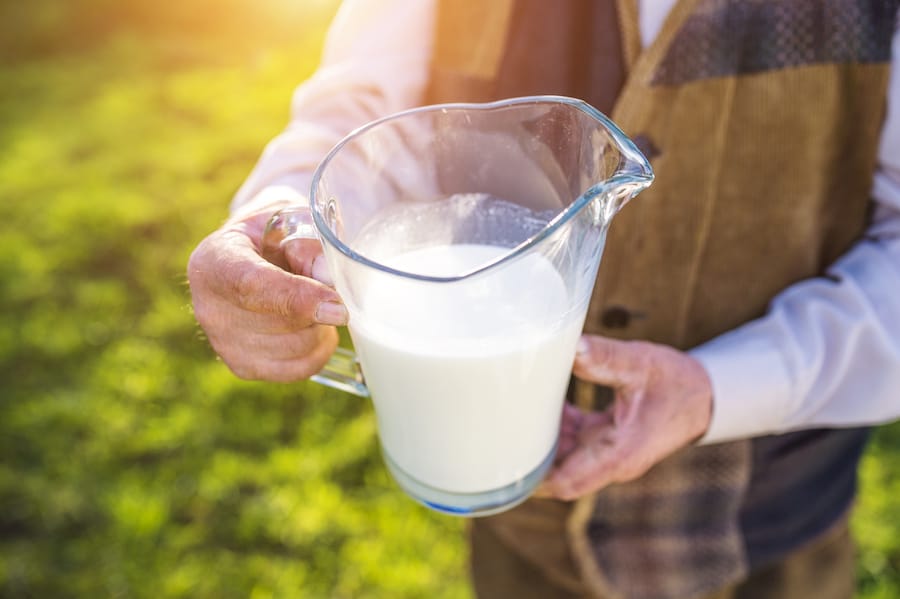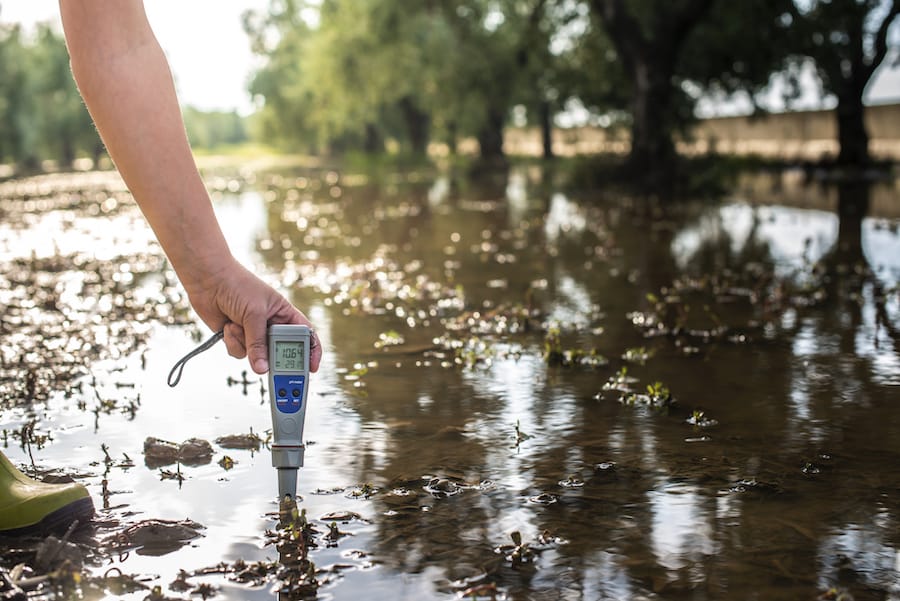We all know that drought is no time to celebrate. Which is probably why the concept of rain dances are so popular. No one ever dances during a drought!
High temperatures during a drought can have a hugely negative impact on grass-yield and quality, and the productivity and fertility of cows.
As land managers, drought is a huge issue that dairy farmers are forced to deal with. The domino effect of drought includes an increase in the price of feed, water, costs of farming.
Not to mention that it also puts a lot of financial, emotional and mental pressure on the farmers.
However, we can do our best by preparing for it. From making the right plans to taking the necessary actions, there are certain tricks up our sleeve that will help minimise the hardships of drought.
Read on!
How does drought affect the farmers?
It increases feed prices and depletes water that’s available for the animals and the farm.
Cows mostly graze on pasture but in some cases, especially in winter, they do rely on grain and hay to get their daily nutrition. It is estimated that 25% of the milk in Australia is produced from the grain that the dairy cows eat.

During periods of drought, it is expensive to grow feed, as well as to buy feed from other sources since the prices go up.
The vicious cycle of drought is perhaps best described as an experienced dairy farmer said, “We can’t milk cows without fodder; we can’t have fodder without water to grow it.”
If you plan ahead, you can minimize the harsh effects of drought. We’re going to arm you with an arsenal of easy-to-execute tips and tricks that will help you ‘sail’ (excuse the awful pun!) through the drought smoothly.
How to deal with drought
Planning: As always, it’s important to have an action plan in order for your farming activities to move like clockwork, despite a tough situation.
The main decisions you’ll need to take usually revolve around:
- Use of water already available
- What forages to grow
- Purchasing feed
- Number of animals to be fed
- Number of animals to be culled
- Level of feeding
- Replacement of herd
Current status: Take stock of your current situation. How much you can feed, how many supplements you have in store, the number of cows you can milk from March to early April etc. Also, explore the options you have in terms of buying feed/supplements and reducing feed demand.
Managing your herd: You have to decide on how many cows will be milked.
Underfeeding lactating cows is bound to have a terrible effect on their condition, production and fertility. It may sound harsh but culling heavily and thereby reducing feed demands will put you in a better position to provide nutrition to the more valuable animals.
Increasing culling of animals with higher cell counts, low production rates, aging animals or problem-givers.
Feed lactating, dry and growing stock closer to their needs and non-producing animals can be culled or sold.
You can reinstate the herd after the drought is over.
Dry off stale cows will again save up feed for more-responsive cows that are mid-lactation. Dried-off cows will have a longer rest period to regain their strength for the next calving. Some of these could be culled or sold.
Animal grazing: Keep a close watch on your cows when there is a comparatively lesser area of green feed. Because crops like lucerne and clovers can cause bloat. While drought-tolerant crops like sorghum have prussic acid.
When there is moisture stress, it leads to plant accumulation, and on the other hand, grazing pressure can increase the amount of forage the cows eat. This could cause diseases.
Do not let your cows graze wilted or immature growth. Also, it’s better to feed concentrated supplements before grazing suspect forages so that the cows are not ravenously hungry and won’t end up eating too much of it.
You could also include mineral supplements in your cows’ diet plans to support microbial fermentation.
The irrigation solution: A quick switch to supplementary irrigation of forage crops or tropical pasture in spring/summer will result in the growth of more dry matter (DM) with less water than is required for annual or perennial temperate pastures.
Here are some important points to remember about homegrown feed:
- Over-sowing ryegrass with summer forages helps to increase the quantity of homegrown feed
- Temperate pastures that have been previously irrigated will have moisture available at a depth that can be tapped into by summer forages with less water
- Even in times of drought, summer storms can occur. Nitrogen fertiliser will boost the response of grass to even light showers for greater DM yields. But remember, that fertilisers soil moisture to work.
Purchased feed: Buy supplements at the best possible price, according to their nutrient content. Ration out the supply so that you are meeting your hungry cows’ demands and minimise wastage of feed.
OAD: OAD, also known as Once-A-Day refers to the practice of milking your cows once a day or every 16 hours. This is a good option to turn to when feed is limited.
OAD reduces the pressure of walking to the shed. The effect OAD has on milk production is dependent on variables like the production levels of the cows, their generic merit and the quantity of feed available.
Concentrate feeds like grains, molasses, by-products etc. are expensive per kg but still cheaper when it is purchased per unit.
Did you know that concentrates can safely comprise up to 40 of a cow’s ration?
This also helps improve the quality of nutrition and extend forage availability.
Water quality: Water can be conserved by dry scraping holding yards.
Natural sources of water like streams and ponds should be closely monitored during a drought. The quality of water should also be monitored.
Dairy cows do not like to slurp on poor quality water. And when water is stagnant, it could cause diseases due to botulism and blue-green algae.

Your milking equipment like cups and liners should be cleaned with good water, and your cows’ udders too. If the quality of water used to clean is poor, it could cause serious udder infections.
Review:
Every plan has to be reviewed.
And in times of drought, the review has to be either every week or every 10 days!
Your cows also need to be analysed every 3-4 weeks, especially the 2-year-old and 3-year-old cows, and you can dry them off based on their body condition score, number of days from calving, winter pasture growth rates and calving dates.
On a more personal note, as the saying goes, ‘When the going gets tough, the tough get going!’ It’s more important than ever to stick together.
Be there for your team, help boost their morale during these tough times, lead by example and take the time out to celebrate little milestones or special occasions just to infuse some cheer into your farm during tough times.
When can you consider the drought as done and dusted?
The drought can be considered as done, or ‘broken’ only when there has been enough rain to take the soil to within 15% of the field capacity. 15% of the field capacity roughly amounts to 50 mm.
Until the drought breaks, use our tips from this article or read more on farm land management to help you ease the pain in beating the drought!
- The Dedicated Team of Pasture.io, 2020-11-10